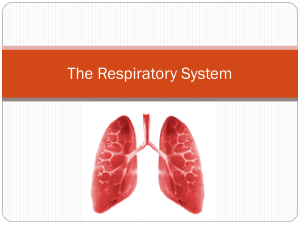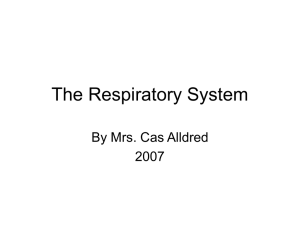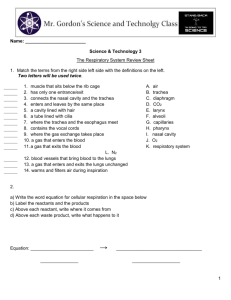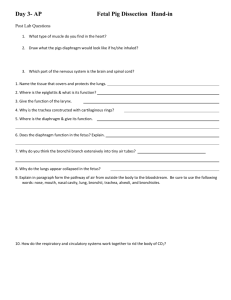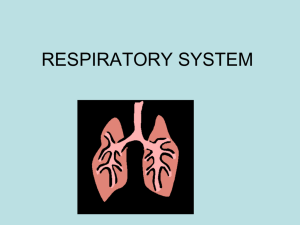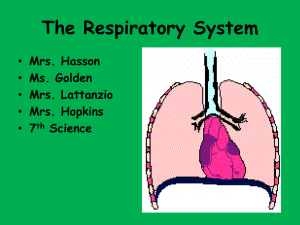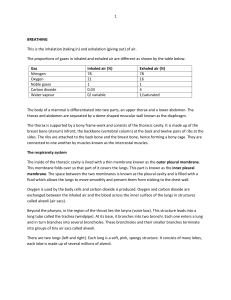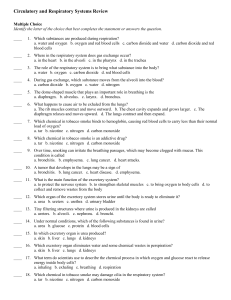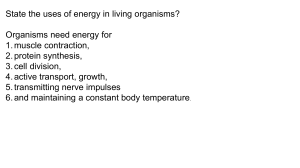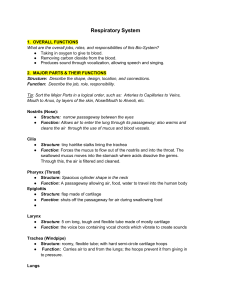Document 14452520
advertisement
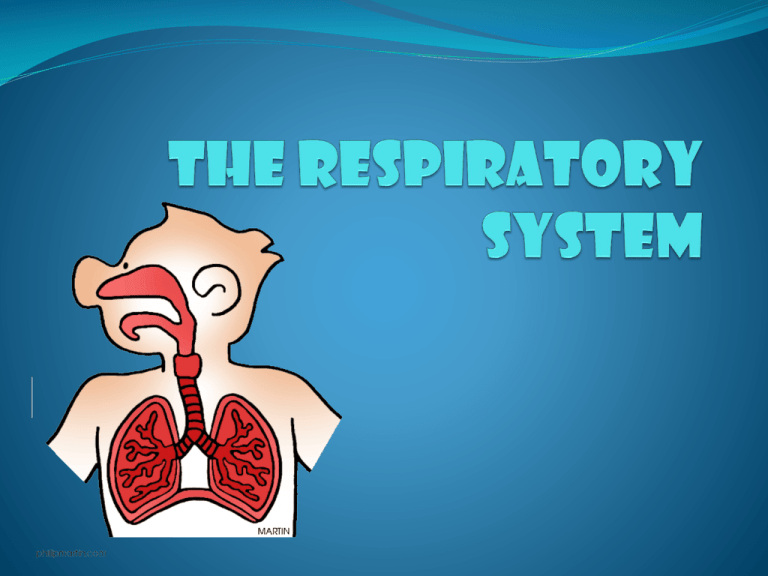
Functions Provides oxygen to the body and removes carbon dioxide from the body Works closely with the circulatory system components The respiratory system is made up of the following: Nasal cavity Mouth Pharynx Trachea Bronchi Lungs Diaphragm Respiratory system Pathway of air Mouth/Nose Pharynx (Throat) Trachea (Windpipe) Bronchi Lungs Trachea Also known as the windpipe Supported by cartilage rings Keeps trachea open and allows air to flow freely Contains epithelial cells that have hair-like projections called cilia Cilia help filter out and remove foreign materials (such as dust) that can possibly enter the bronchial tubes and lungs cilia Alveoli (Singular: Alveolus) Tiny air sacs Each alveolus is surrounded by a capillary network allowing gas exchange to occur Site of gas exchange Oxygen diffuses from the alveoli into the blood Carbon dioxide diffuses from the blood into the alveoli Diaphragm Thin dome-shaped muscular sheet that lies underneath the ribs How do we breathe? Breathing Involuntary reaction Controlled by a part of the brain that detects the concentration of carbon dioxide in the blood Increased carbon dioxide levels in the blood causes an increase in breathing rate inhalation Taking air into lungs Inhalation Diaphragm Contracts Intercostal Muscles (Rib muscles) Contracts Chest cavity Up and Out Volume Increases Pressure Decreases Air moves... In Exhalation Pushing air out of lungs Inhalation Diaphragm Relaxes Intercostal Muscles (Rib muscles) Relaxes Chest cavity In and down Volume Decreases Pressure Increases Air moves... Out Breathing animation Tuberculosis (TB) Infectious disease Caused by bacteria that enter your body when you breathe Bacteria grows in your lungs Symptoms: fever, cough, weight loss, tiredness, chest pain Treatment: medicine, hospitalization Tuberculosis (TB) cancer
